Flood Protection
Discover where your property is in relation to the floodplain.
Terrebonne Parish is located in southeast Louisiana along the Gulf of Mexico. The parish is approximately 2,100 square miles and is the second largest parish in Louisiana. More than 85% of the parish area is made up of water and wetlands. The highest point in Terrebonne Parish is 13 feet above sea level.
The wetlands in Terrebonne Parish include fresh marsh, intermediate brackish marsh, and salt marsh near the coastline. These marshes are intertwined with hundreds of lakes, bays, bayous, and canals. Some of the more notable water bodies within the parish include: Bayou Black, Bayou Dularge, Bayou Grand Caillou, Bayou Petit Caillou, and Bayou Terrebonne. These bayous are significant, as they historically provided the land-building sediment that created the highest areas of the parish. This sediment was deposited during annual flooding cycles of Bayou Lafourche. It is upon these finger-like ridges that all urban and agriculture land exists in the parish today.
Terrebonne Parish has many structures in the Special Flood Hazard Area. Visit maps.lsuagcenter.com/floodmaps to see if your property is in or near a flood hazard area.
Check with Terrebonne Parish Permit Office to learn about flood protection measures for your property.
Even properties located outside of the floodplain should be insured for flood.
Terrebonne Parish participates in the National Flood Insurance Program (NFIP), so flood insurance is available to everyone.

Important things to remember:
- Homeowners insurance does NOT cover flooding.
- Don't wait! There is a 30-day waiting period before a flood policy takes effect.
- Standard flood policies do NOT cover contents - make sure your policy does.
- If you live outside the Special Flood Hazard Area, you may be eligible for a Preferred Risk Policy at a lower cost.
Contact a flood insurance agent to ask about flood insurance today!
Protect you and your family from flood hazards.
Turn around, don't drown.
- If it may flood, prepare your home:
- Shut off electricity.
- Shut off gas.
- Move valuables above water level.
- Anchor fuel tanks.
- Have an evacuation plan: make a list of emergency numbers, identify a safe place to go, and know your evacuation route.
- Make a household inventory list, especially of contents. Record a video and be sure to get all the walls from top to bottom.
- Put insurance policies, valuable papers, and medicine in a safe, dry place that is easy to access.
- Put cleaning supplies in a handy place.
- Develop a Family Disaster Plan.
- Teach children about hurricanes and hurricane safety.
- Help friends and family members with special needs.
- Do not drive through a flood. Turn around, don't drown.

Visit Terrebonne Parish Office of Homeland Security and Emergency Preparedness website for more information.
Protect your property from flooding.
Retrofit your home or business to help protect from flooding.
- Mark your fuse or breaker box to show the circuits in floodable areas. Turning off the power to those areas can reduce property damage and save lives.
- Check your house for water entry points.
- Install a floor drain plug, standpipe, overhead sewer, or sewer backup valve to prevent sewer backup flooding.
- Consider elevating your home above flood levels, wet or dry floodproofing, or installing barriers.
How can I retrofit my home for flood protection? There are six different ways:
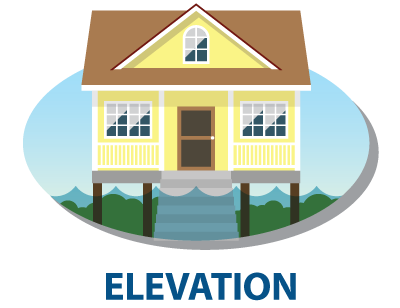
Elevation means raising your home so that the lowest floor is above the flood level. This is the most common way to avoid flood damage.
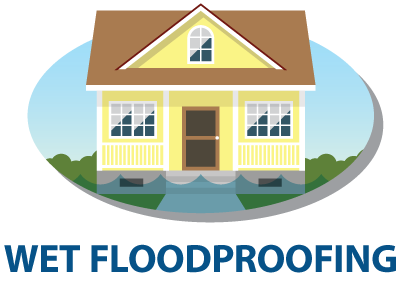
Wet floodproofing makes uninhabited parts of your home resistant to flood damage when water is allowed to enter during flooding.
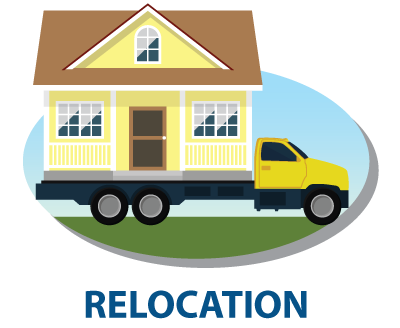
Relocation means moving your home to higher ground where the exposure to flooding is eliminated altogether.
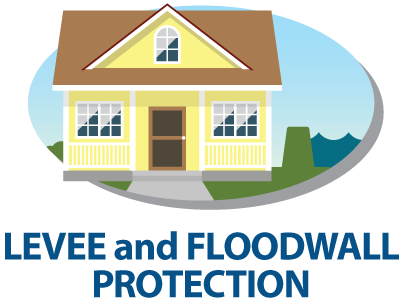
Levee and floodwall protection means constructing barriers to prevent flood waters from entering your home.
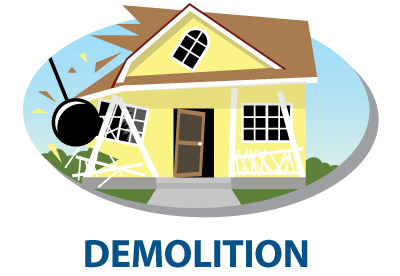
Demolition means razing your home. Homeowners can rebuild to flood-safety standards on the same property or buy a house elsewhere.
Build responsibly.
Retrofit homes or businesses in flood zones, do not build in the floodway.
- All development in the Special Flood Hazard Area requires a permit.
- High-hazard V zones and coastal A zones have stricter compliance requirements.
- Build to the best available knowledge rather than just to the regulatory standard.
- Build to be safe from flooding now and in the future.
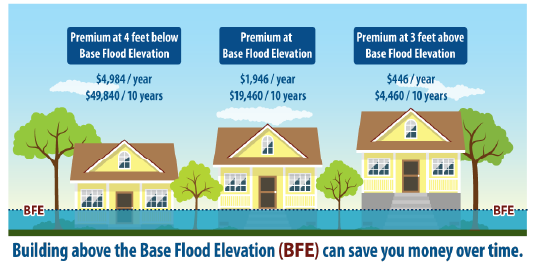
Source: Federal Emergency Management Agency
Construction Rules
Terrebonne Parish has a Flood Damage Prevention Ordinance in order to promote the public health, safety, and general welfare and to minimize public and private losses due to flood conditions in specific areas by provisions designed to: Protect human life and health; Minimize expenditure of public money for costly flood control projects; Minimize the need for rescue and relief efforts associated with flooding and generally undertaken at the expense of the general public; Minimize prolonged business interruptions; Minimize damage to public facilities and utilities such as water and gas mains, electric, telephone and sewer lines, streets and bridges located in floodplains; Help maintain a stable tax base by providing for the sound use and development of flood-prone areas in such a manner as to minimize future flood blight areas; and Ensure that potential buyers are notified that property is in a flood area.
This applies to all areas of special flood hazard within Terrebonne Parish and the City of Houma.
Methods of reducing flood losses
In order to accomplish its purposes, the ordinance:
Restricts or prohibits uses that are dangerous to health, safety, or property in times of flood, or cause excessive increases in flood heights or velocities; Requires that uses
vulnerable to floods, including facilities which serve such uses, be protected against flood damage at the time of initial construction; Controls the alteration of natural floodplains, stream channels, and natural protective barriers, which
are involved in the accommodation of floodwaters; Controls filling, grading, dredging, and other development which may increase flood damage; Prevents or regulates the construction of flood barriers which will unnaturally divert floodwaters or which may increase flood hazards to other lands.
Substantial Improvement/Damage Requirements
The NFIP requires that a building must meet the same construction requirements as a new building if the cost of reconstruction, rehabilitation addition, or other improvements to a building equals or exceeds 50% of the building's market values.
Substantially damaged buildings are those in which the cost of repairs equals or exceeds 50% of the building's value prior to its being damaged. These buildings must be elevated above the base flood elevation.
For information on safe building, call the Terrebonne Parish Permit Office at (985) 873-6567.
Keep ditches and culverts clear of debris.
According to FEMA's Protecting Floodplain Resources: A Guidebook for Communities, "the recognized benefits of a naturally functioning floodplain include the storage and conveyance of flood waters, the recharging of groundwater, the maintenance of surface water quality, and the provision of habitats for fish and wildlife. These areas also provide diverse recreational opportunities. scenic value, and a source of community identity and pride" (1996, p. 1).
There are many ways to protect natural floodplain functions, including:
- Keeping areas of the floodplain in their natural state
- Preventing dumping in the floodplain
- Preserving natural drainage
- Controlling runoff
- Protecting wildlife habitats
- Requiring erosion control in new development
Why do we need to manage stormwater and polluted runoff in "Louisiana's Bayou Country"?
Terrebonne Parish controls the alteration of natural floodplains, stream channels, and natural protective barriers, which are involved in the accommodation of floodwaters under the Flood Damage Prevention Ordinance. The natural areas map shows the waterways and wildlife management areas in Terrebonne Parish.
Approximately 85% of Terrebonne Parish is water or wetlands. Generally from north to south, the wetlands include fresh marsh, intermediate brackish marsh, and salt marsh near the coast line. These marshes are intertwined with hundreds of lakes, bays, bayous, and canals. Some of the more notable water bodies within the parish include:
- Bayou Black
- Bayou Dularge
- Bayou Grand Caillou
- Bayou Petit Caillou
- Bayou Terrebonne
- Houma Navigation Channel
- Intracoastal Waterway
How can you help?
Erosion control on projects can help prevent sedimentation of flood paths. Report broken sediment fences or projects without a sediment fence to the Permit Office.
Dumping in the floodplain can clog the drainage system. Call the Terrebonne Parish Solid Waste Division at (985) 873-6761 if you see illegal dumping.
Have a hurricane plan.
- If it may flood, prepare your home:
- Shut off electricity.
- Shut off gas.
- Move valuables above water level.
- Anchor fuel tanks.
- Have an evacuation plan: make a list of emergency numbers, identify a safe place to go, and know your evacuation route.
- Make a household inventory list, especially of contents. Record a video and be sure to get all the walls from top to bottom.
- Put insurance policies, valuable papers, and medicine in a safe, dry place that is easy to access.
- Put cleaning supplies in a handy place.
- Develop a Family Disaster Plan.
- Teach children about hurricanes and hurricane safety.
- Help friends and family members with special needs.

Visit the Terrebonne Parish Office of Homeland Security and Emergency Preparedness website for more information.
Have plans for hurricanes, tornadoes, and other natural events.
- If it may flood, prepare your home:
- Shut off electricity.
- Shut off gas.
- Move valuables above water level.
- Anchor fuel tanks.
- Have an evacuation plan: make a list of emergency numbers, identify a safe place to go, and know your evacuation route.
- Make a household inventory list, especially of contents. Record a video and be sure to get all the walls from top to bottom.
- Put insurance policies, valuable papers, and medicine in a safe, dry place that is easy to access.
- Put cleaning supplies in a handy place.
- Develop a Family Disaster Plan.
- Teach children about hurricanes and hurricane safety.
- Help friends and family members with special needs.

Visit the Terrebonne Parish Office of Homeland Security and Emergency Preparedness website for more information.
Flooding is the second most prevalent hazard event type recorded by the National Climactic Data Center (NCDC) in Terrebonne Parish. In the last 50 years, the NCDC recorded 23 flood events. The parish experiences stormwater, storm surge, riverine, and backwater flooding.
The table below details the flood events in Terrebonne Parish from 1996 to 2012.
It is important to understand your flood hazard. Know more about your flood risk and consider getting flood insurance.
| Date | Type | Property Damage | Rainfall |
|---|---|---|---|
| 10/5/1996 | Coastal Flood | N/A | N/A |
| 2/12/1997 | Flood | N/A | N/A |
| 4/5/1997 | Coastal Flood | N/A | N/A |
| 9/10/1997 | Flood | N/A | N/A |
| 1/6/1998 | Flash Flood | $35,000 | 4-9" |
| 9/12/1998 | Storm Surge/Tide | N/A | N/A |
| 6/26/1999 | Flash Flood | $500,000 | 3-10" |
| 6/6/2001 | Flash Flood | $500,000 | 11-23" |
| 6/6/2001 | Flash Flood | $75,000 | 11-23" |
| 6/10/2001 | Flash Flood | $250,000 | 11-23" |
| 6/30/2003 | Storm Surge/Tide | $1,000,000 | 5-10" |
| 9/15/2004 | Storm Surge/Tide | $5,000 | N/A |
| 9/22/2004 | Storm Surge/Tide | $5,000 | N/A |
| 10/9/2004 | Flash Flood | $50,000 | N/A |
| 10/9/2004 | Storm Surge/Tide | $18,00 | N/A |
| 9/23/2005 | Storm Surge/Tide | $138,240,000 | 1-2" |
| 9/23/2005 | Storm Surge/Tide | $34,560,000 | 1-2" |
| 10/16/2006 | Coastal Flood | N/A | 1-2" |
| 12/21/2006 | Heavy Rain | N/A | 1-6" |
| 10/22/2007 | Flash Flood | N/A | 3-10" |
| 5/22/2008 | Flash Flood | N/A | 1-5" |
| 8/3/2008 | Storm Surge/Tide | N/A | 1-4" |
| 8/17/2008 | Flash Flood | N/A | 1-3" |
| 9/1/2008 | Storm Surge/Tide | $9,400,000 | 1-5" |
| 9/11/2008 | Storm Surge/Tide | $100,000,000 | 1" |
| 3/27/2009 | Flash Flood | N/A | 1-8" |
| 12/14/2009 | Flash Flood | N/A | 1" |
| 5/1/2010 | Coastal Flood | N/A | N/A |
| 7/18/2011 | Flash Flood | N/A | 1-3" |
| 9/2/2011 | Storm Surge/Tide | $45,000 | 1-2" |
| 9/4/2011 | Flash Flood | $25,000 | 1-4" |
| 3/23/2012 | Flash Flood | N/A | 1-3" |
| 7/20/2012 | Flash Flood | $10,000 | 1-4" |
| 8/28/2012 | Storm Surge/Tide | $10,000,000 | < 1" |
| 8/28/2012 | Storm Surge/Tide | $1,000,000 | < 1" |
Source: NCDC
All development in Terrebonne Parish, including floodplain development, requires a permit. Call the TPCG Permit Office at (985) 873-6567 for more information. More information can be found in the Terrebonne Parish Permit Office, the Terrebonne Parish Library, or at FloodSmart.gov.
